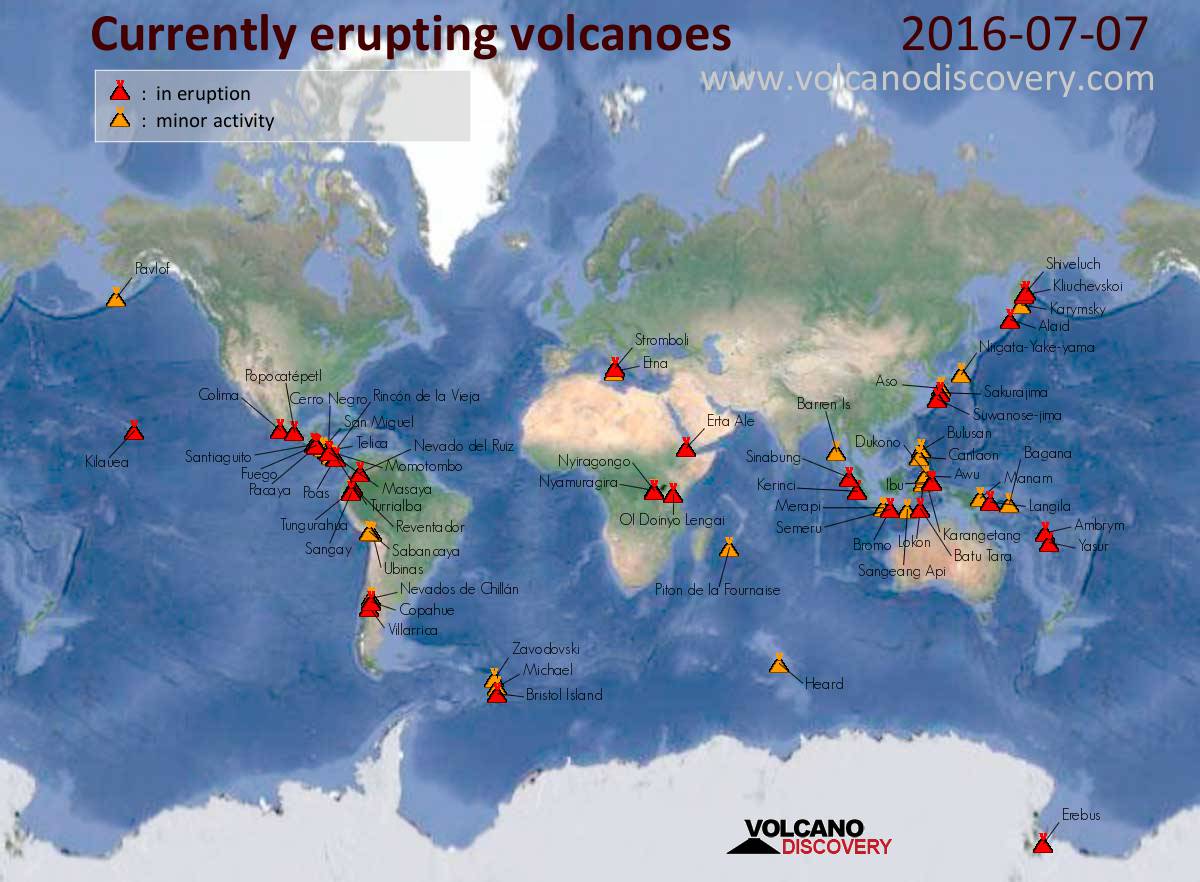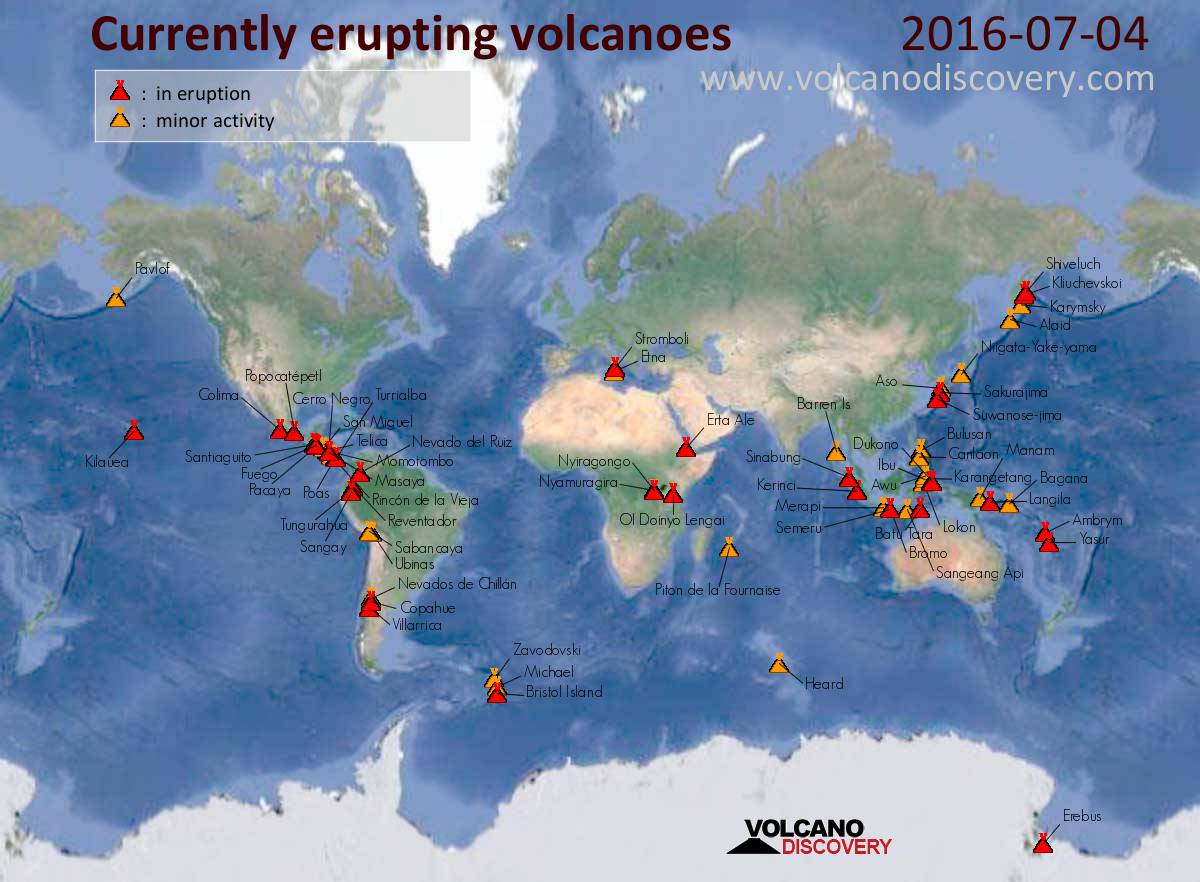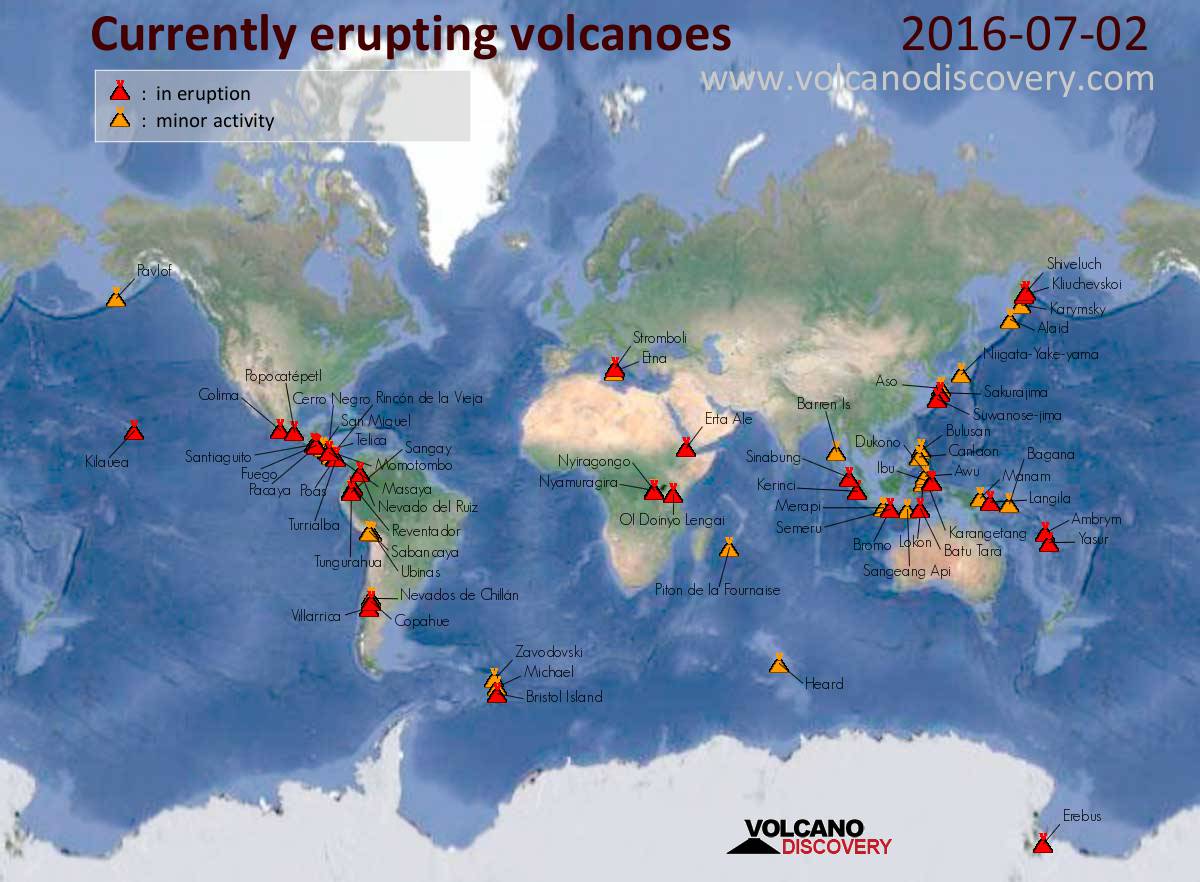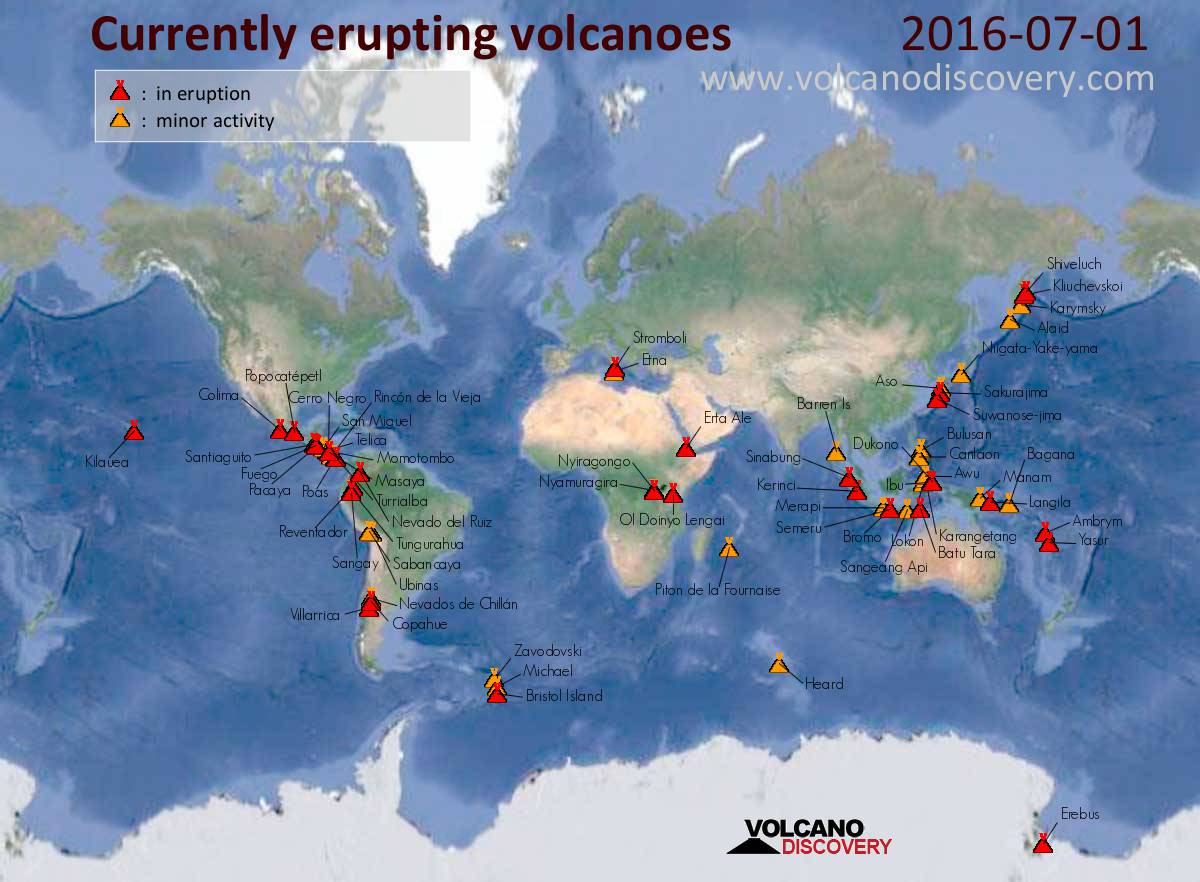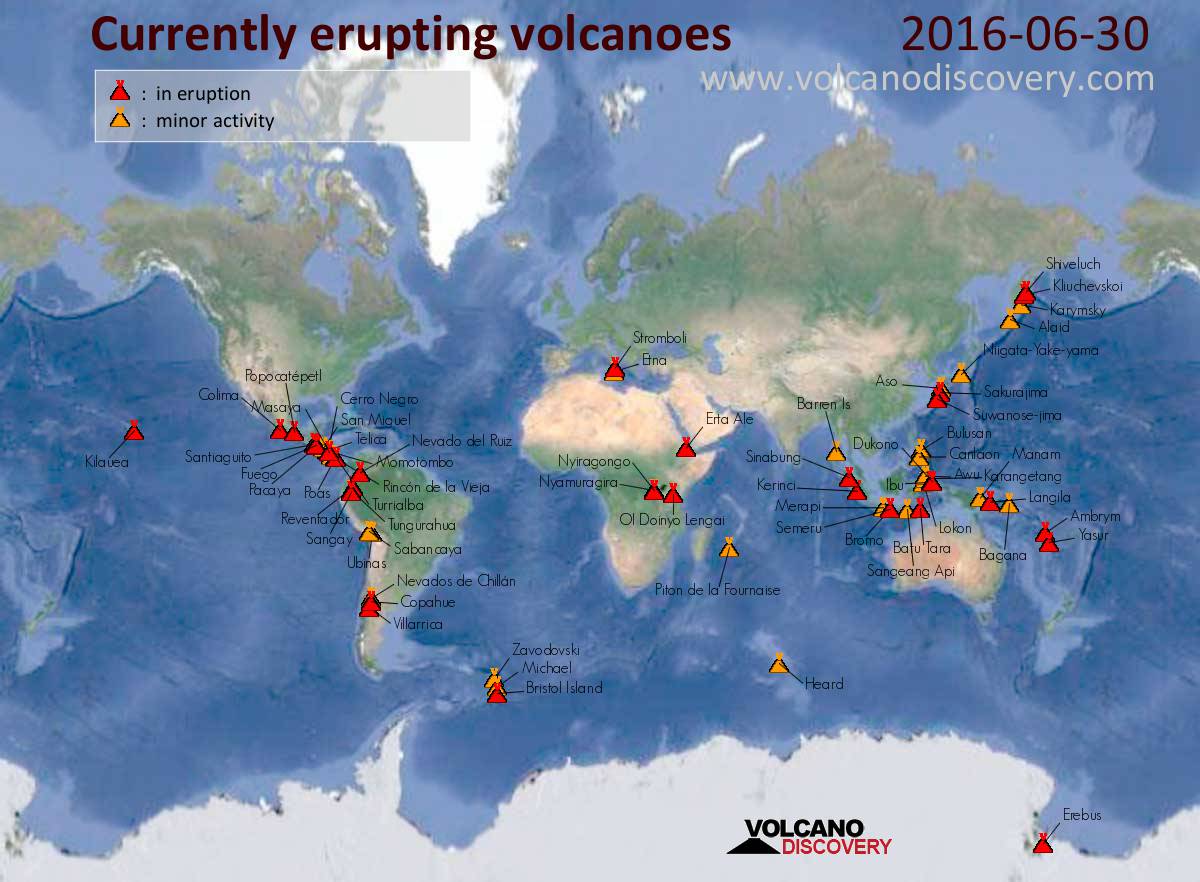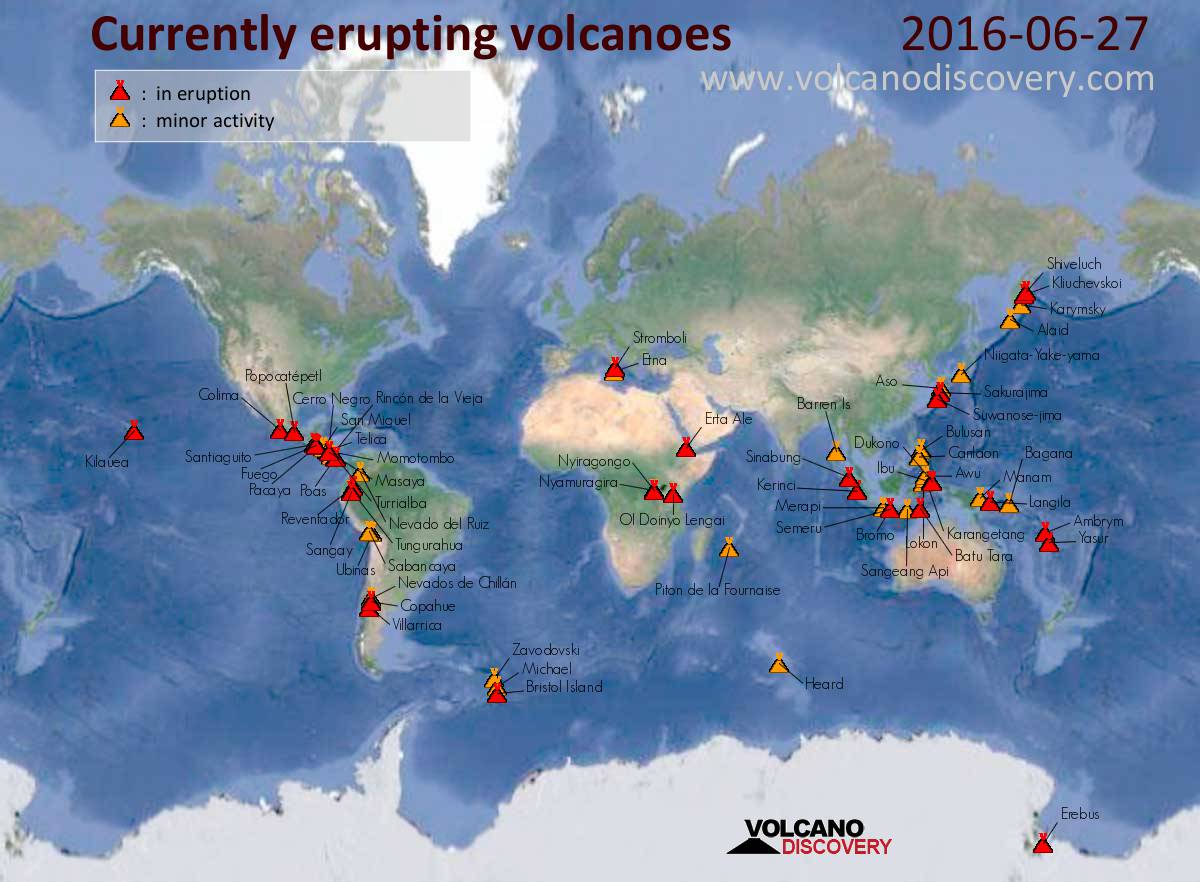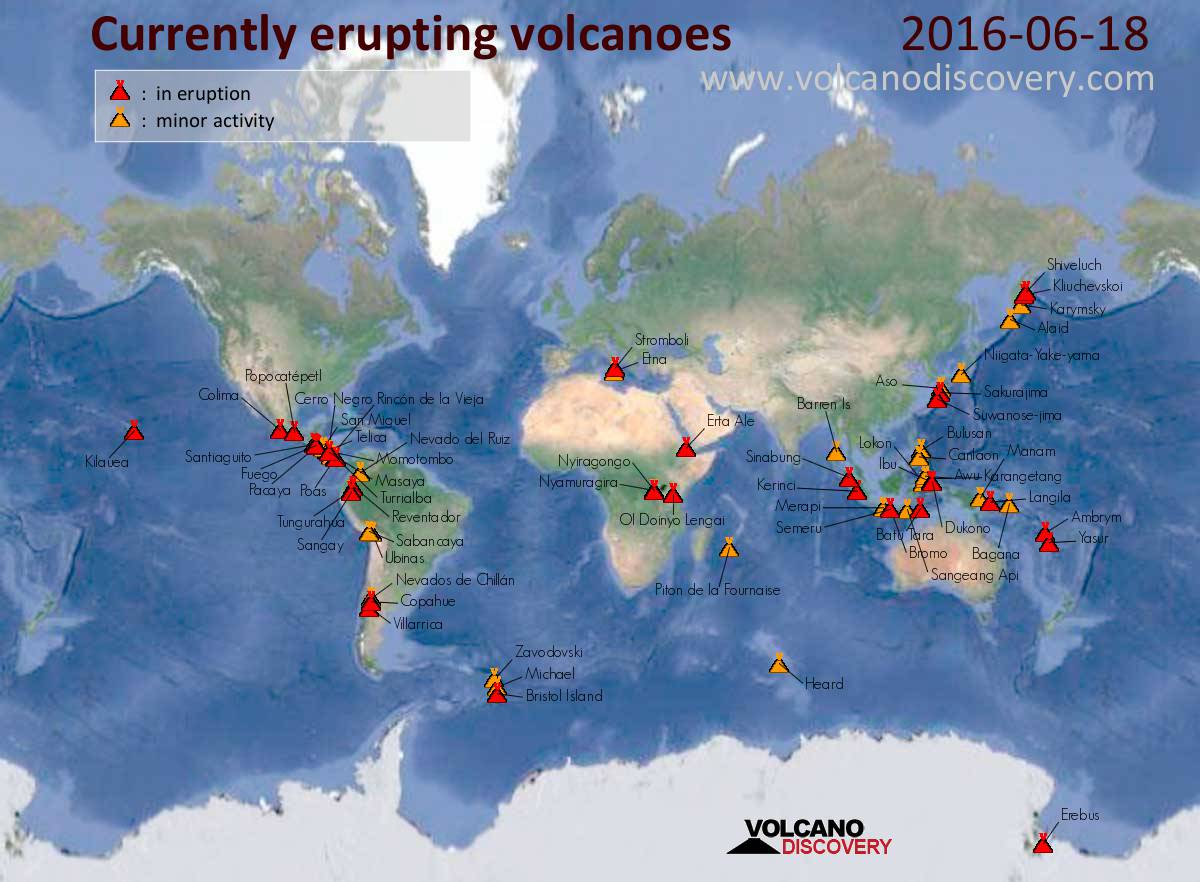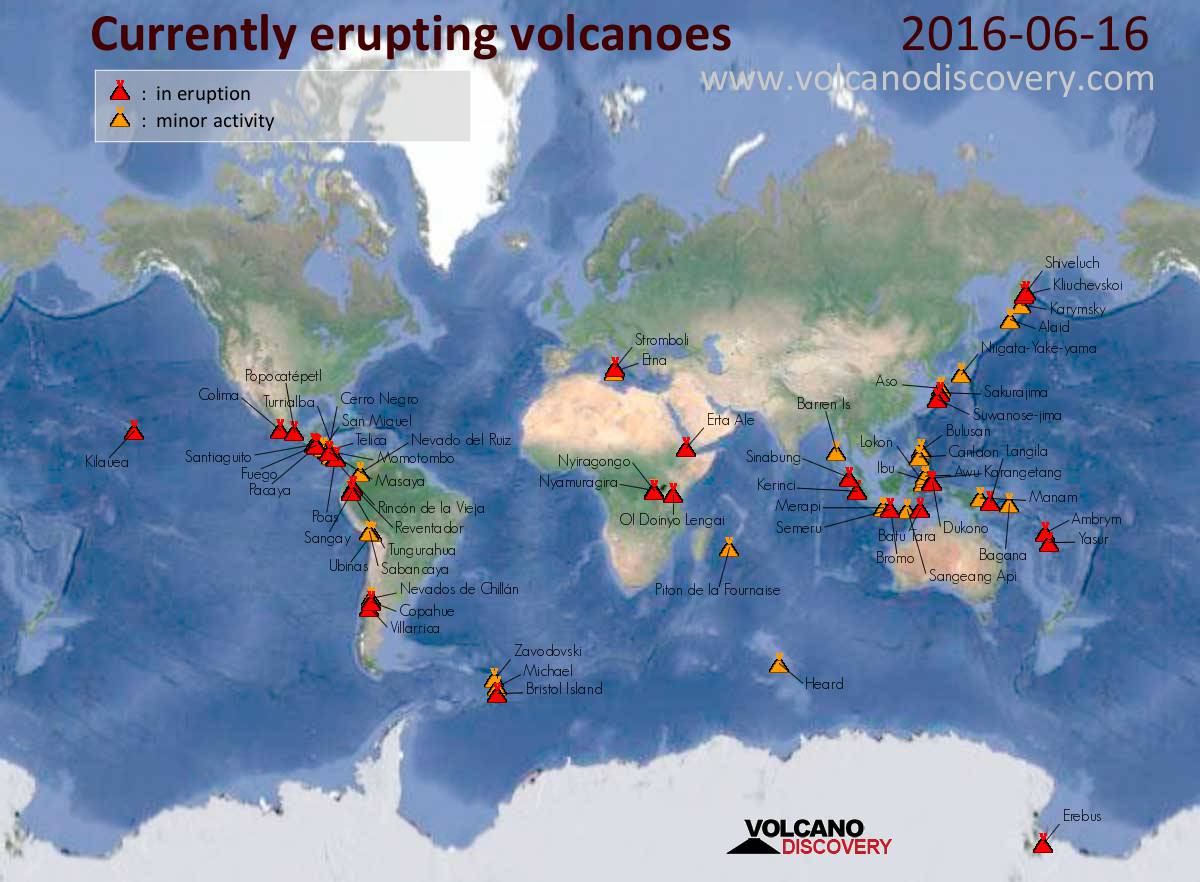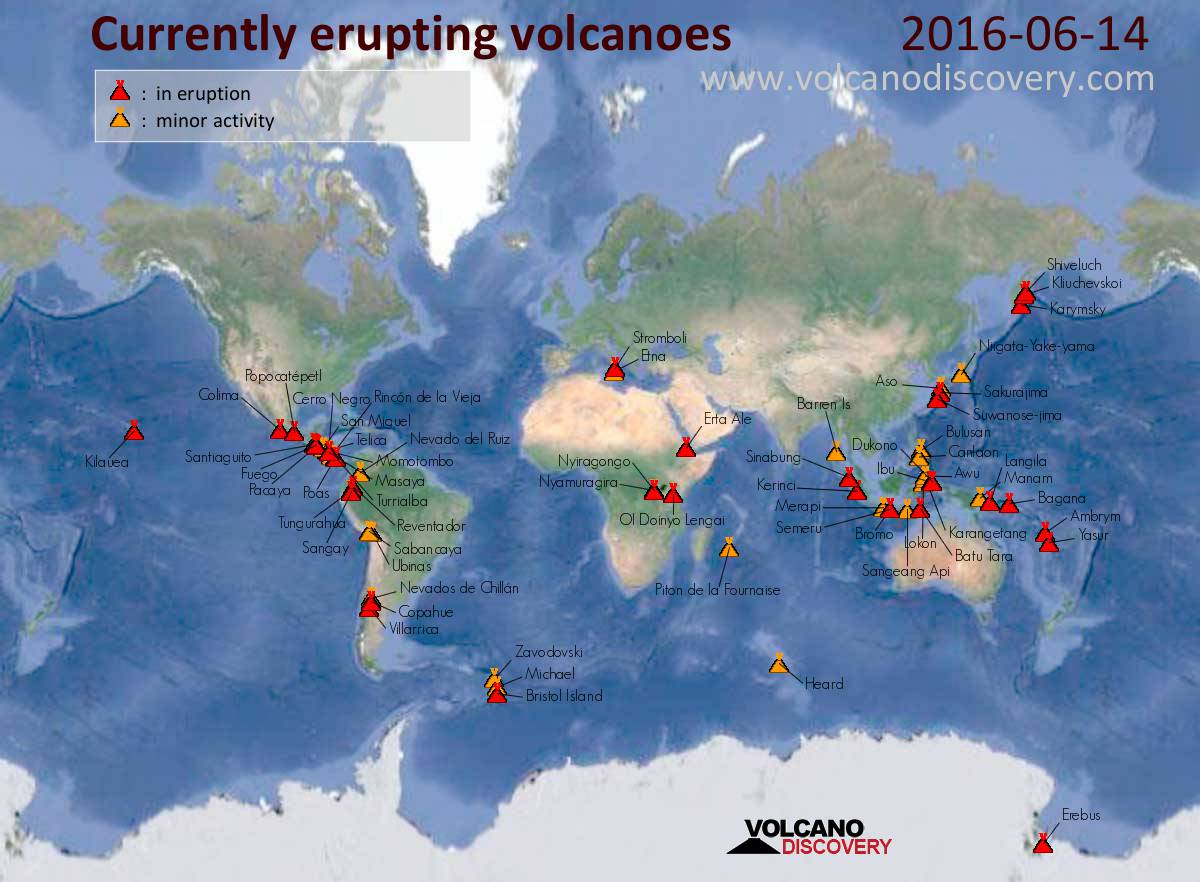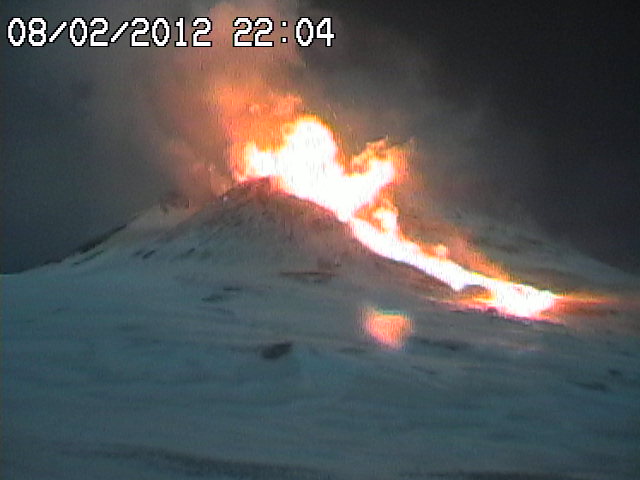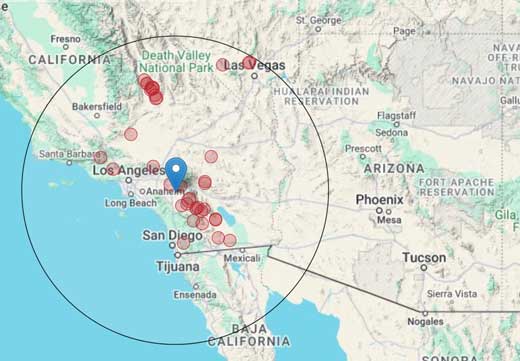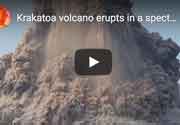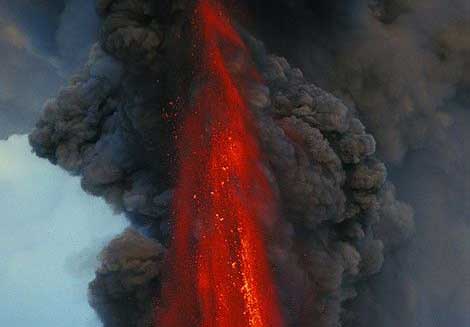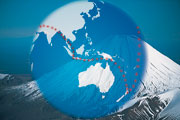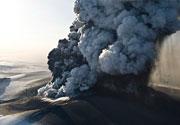Volcanic activity worldwide 12 Jul 2016: Santiaguito volcano, Popocatépetl, Bromo, Dukono, Poas, Tu...
Tue, 12 Jul 2016, 16:08 16:08 PM |
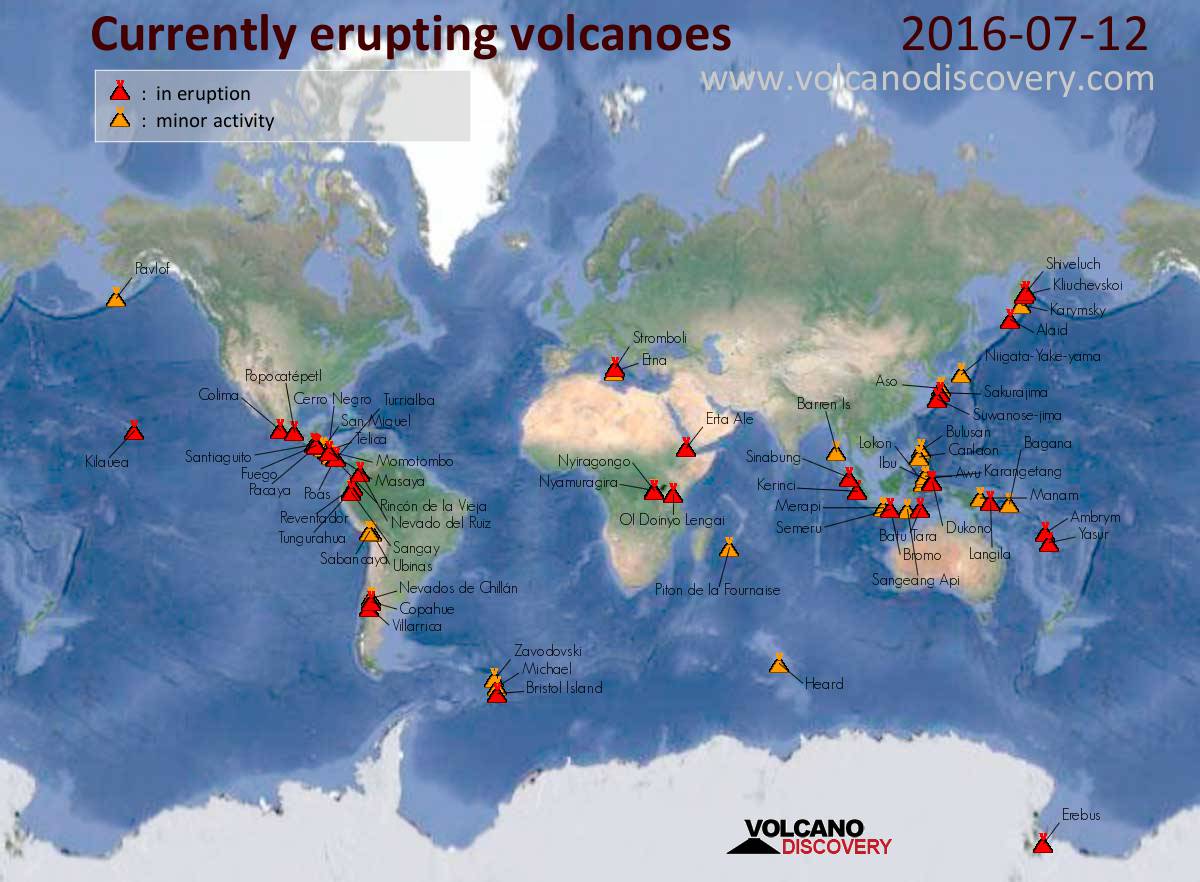
Map of today's active volcanoes
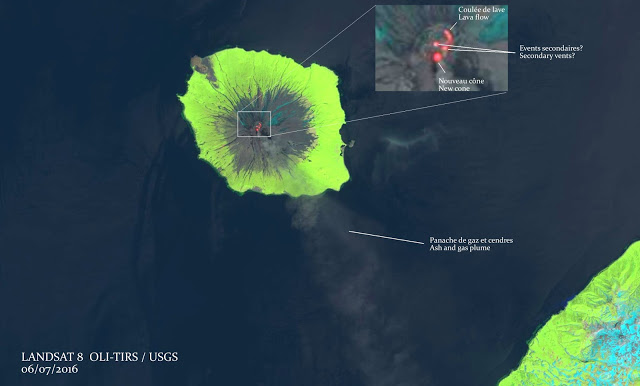
Landsat-8 image of Alaid volcano on 8 July 2016 (annotated by Culture Volcan)
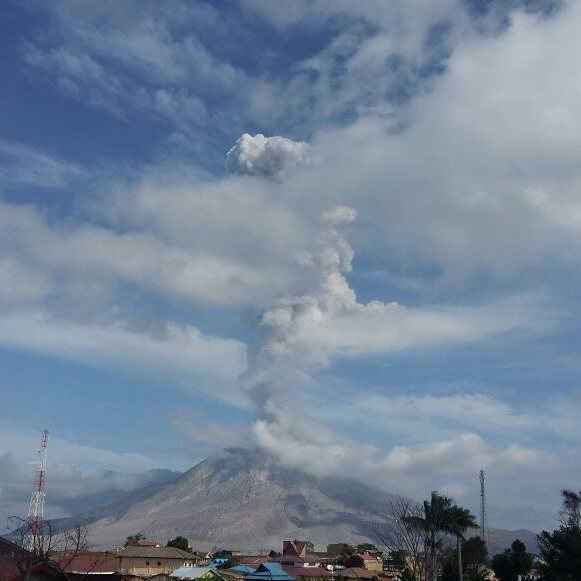
Eruption at Sinabung yesterday (image: PVMBG)
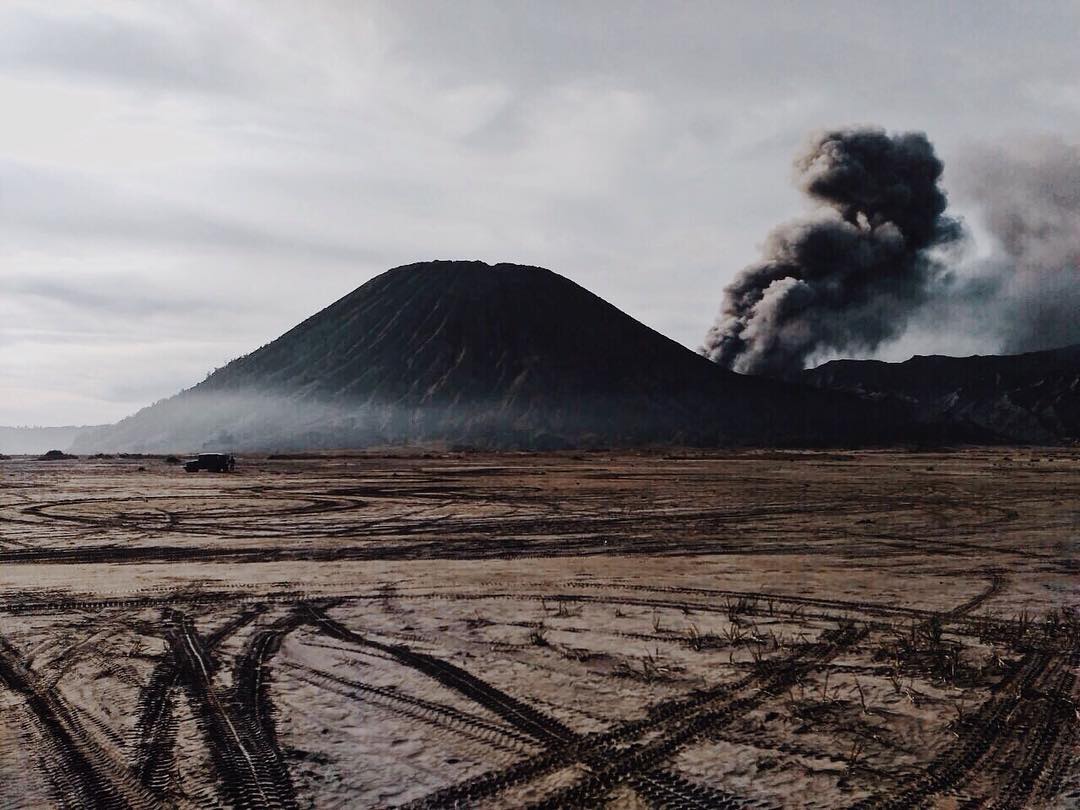
Ash emission from Bromo this morning (photo: xbeechunettex /Instagram)
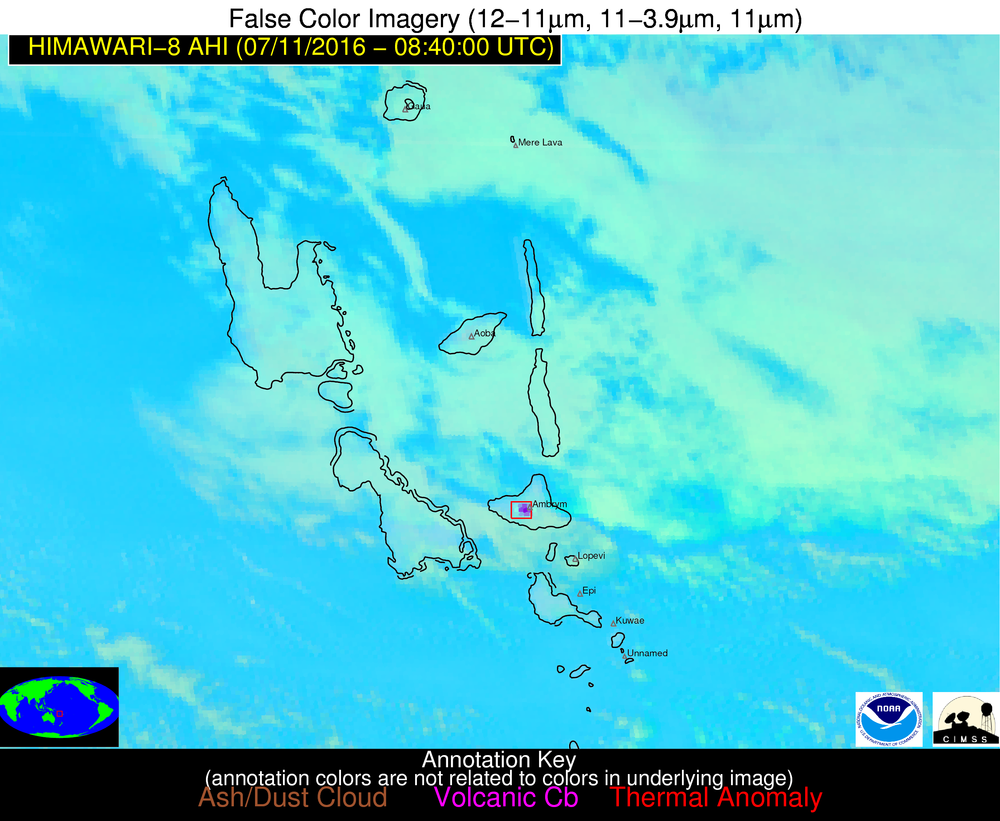
Ash cloud from Ambrym seen on satellite imagery yesterday (image: Himawari-8, NOAA/CIMSS Volcanic Cloud Monitoring)
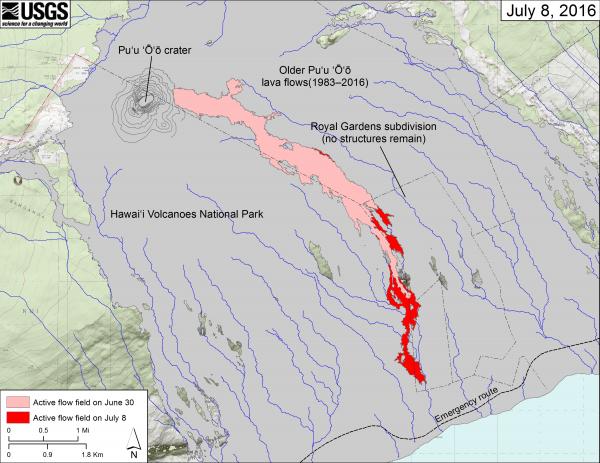
Lava flow field map as on 8 July 2016 (HVO)
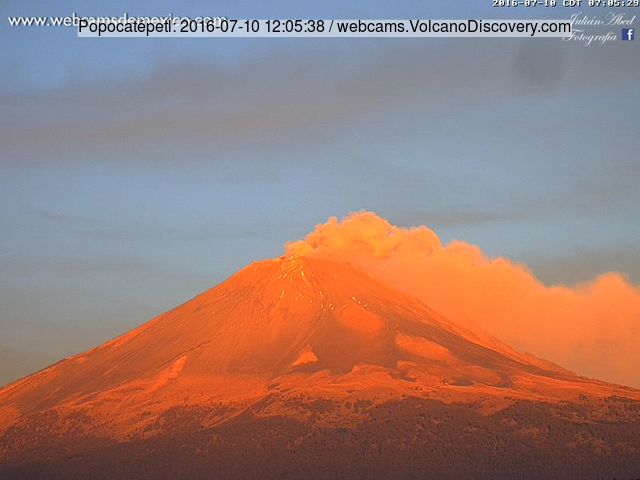
Ash emissions from Popocatépetl Sunday morning (Webcams de Mexico webcam)
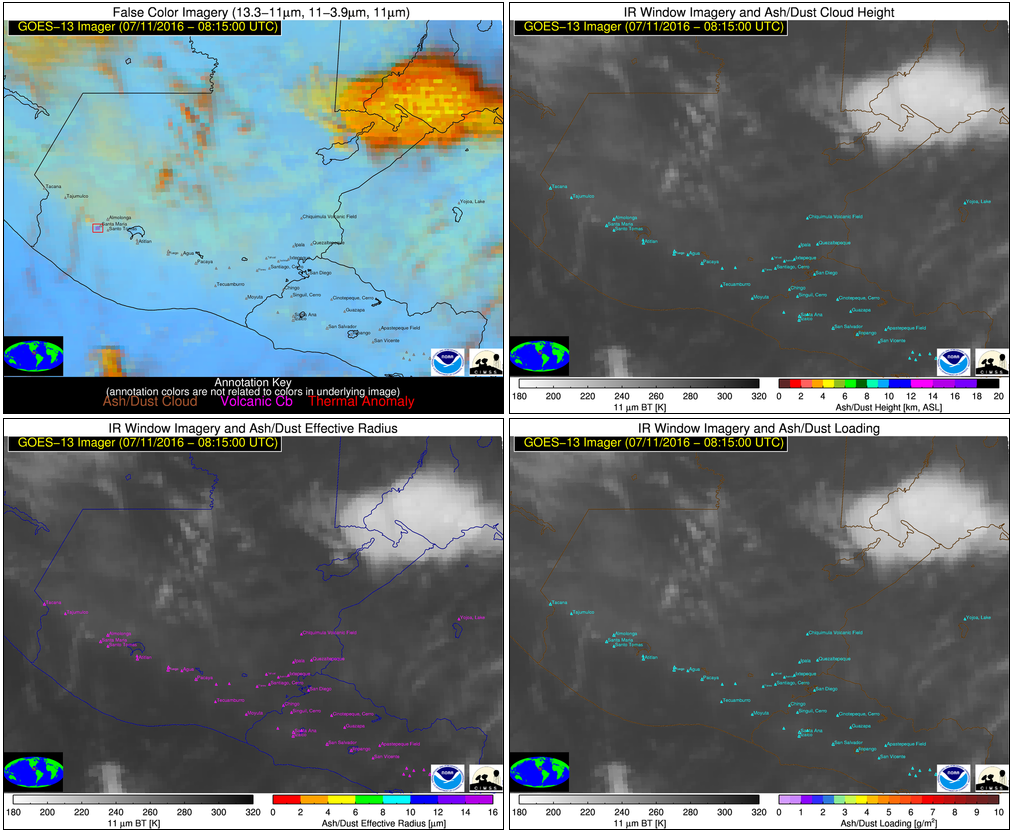
Detection of the ash plume from Santiaguito yesterday morning (NOAA/CIMSS Volcanic Cloud Monitoring website)
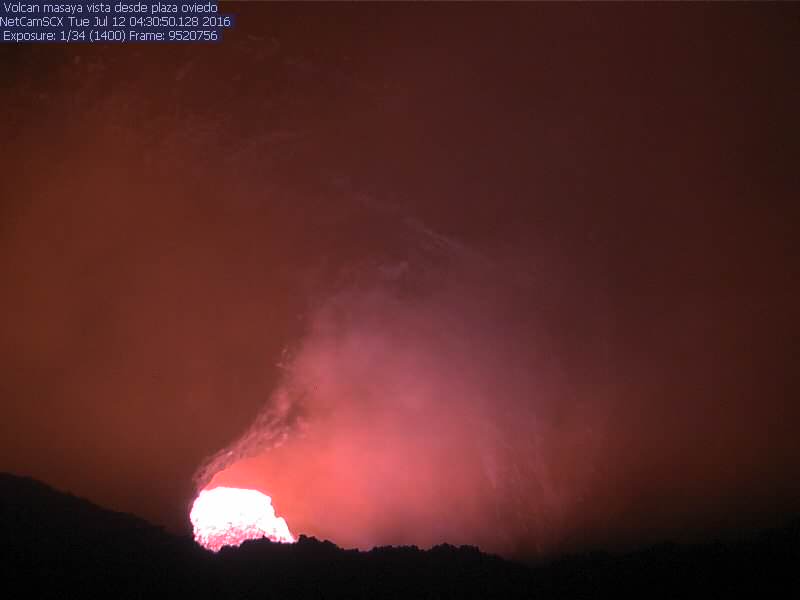
The active lava lake of Masaya this morning (INETER crater webcam)
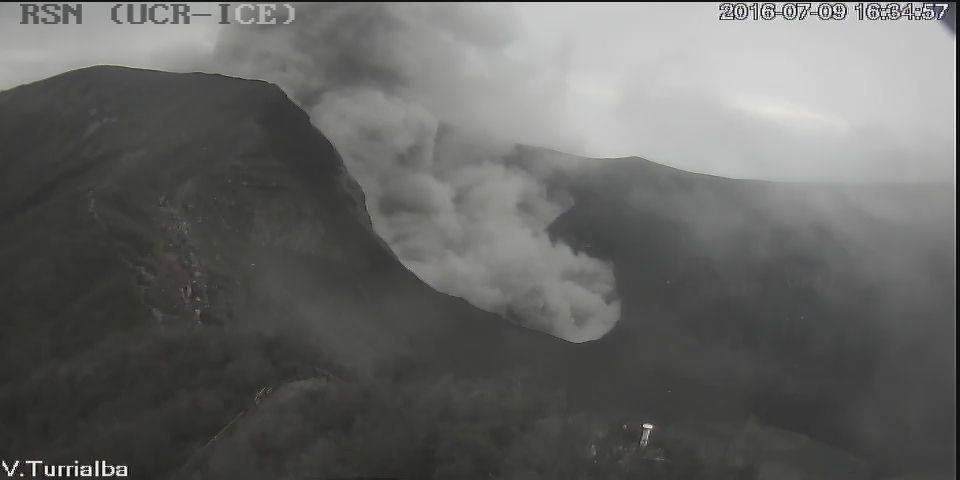
Ash emissions from Turrialba on 9 July 2016 (RSN)
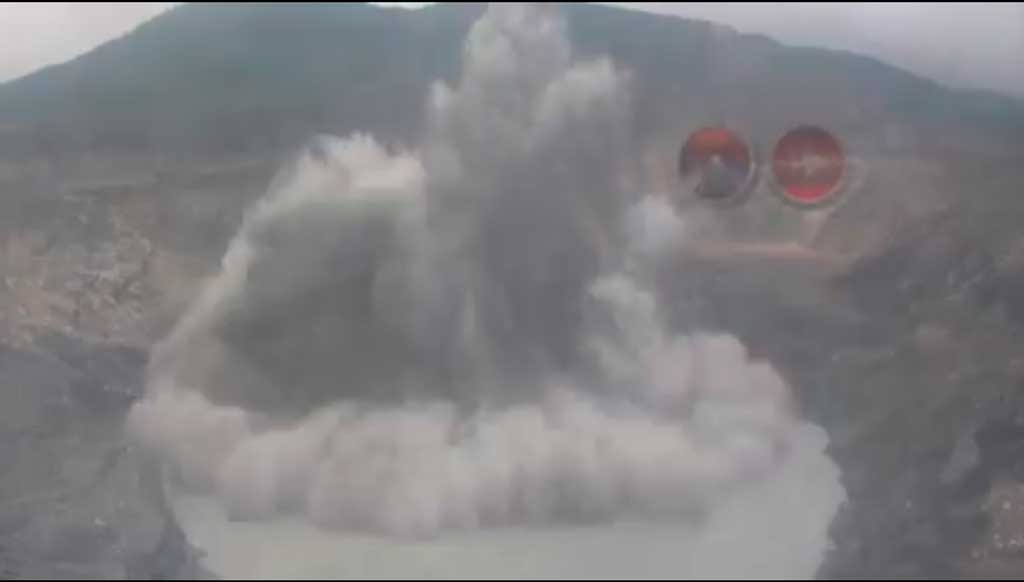
Phreatic explosion at Poás last week (OVSICORI-UNA)
A recent satellite image allows to determine that fresh lava flows have erupted (or still are erupting) from the summit vent(s) and accumulate in the northern part of the summit caldera.
Judging from the attached high-resolution satellite image, it seems likely that the main vent, a cinder cone that has been forming since the start of the recent eruption last October, remains active, likely with strombolian activity, while the lava flows themselves originate from two (?) flank vents at its northern feet.
Sinabung (Sumatra, Indonesia): Explosions of small to moderate size remain relatively frequent at the volcano. A stronger one occurred yesterday morning at 09:24 local time, generating an ash column that rose 3000 m above the summit.
Bromo (East Java, Indonesia): Ash emissions continue at fluctuating levels. A stronger phase of emissions yesterday produced a plume that rose approx. 1200 meters and drifted in westerly directions over Malang, forcing a temporary closure of the city's regional Abdul Rachman Saleh airport.
Dukono (Halmahera): The volcano continues to erupt more or less continuous low levels ash plumes (7-10,000 ft altitude) that drift in various directions before dissipating.
Ambrym (Vanuatu): The activity at the active vents (mainly Marum and Benbow craters) has been elevated recently. Wellington VAAC reported frequent low-level ash emissions based on satellite data. Geohazards has not updated about the activity in recent days, but maintains alert level 2 (on a scale of 0-5, 5 being highest).
Kilauea (Hawai'i): The active lava flows in the coastal plain are now only about 1 km from the coast. Their advance has slowed down significantly as the lava is now in almost flat terrain and the arriving new lava is mostly "used" to inflate the fresh field and expand its sides, until a main lava tube is established in the coastal flat as well.
It is impossible to predict when lava will be hitting the ocean- this could be within few days or even less or still take weeks (if at all, but it is now extremely likely).
... [read more]
Popocatépetl (Central Mexico): The activity at the volcano remains essentially unchanged and CENAPRED maintains alert level "Yellow Phase 2". As magma continues to slowly rise inside the conduit, it accumulates in the inner summit crater as a flat pancake-shaped dome and causes small to moderate intermittent explosions with more or less ash.
This activity is not completely stable, of course, but shows sometimes significant variations: a marked increase of seismic activity occurred during the past days, including a swarm of volcano-tectonic earthquakes and prolonged phases of tremor, probably related to the rise of new magma into the volcano's plumbing system. At the surface, more vigorous ash emissions and more intense glow at the summit were seen and occasionally, stronger explosions were able to throw incandescent bombs outside the crater. The activity has declined again since yesterday.
Santiaguito (Guatemala): Another explosion took place at the volcano yesterday morning (at 01:45 local time), sending an ash plume to 6000 m a.s.l. (18,000 ft), which means it was likely one of the largest in the current series of vulcanian eruptions.
As it occurred at night, there seem to be no direct observations, but the ash plume, which drifted west before dissipating over the Pacific, was detected on satellite imagery.
Masaya (Nicaragua): The lava lake in the Santiago crater remains active, but has dropped a bit recently.
Turrialba (Costa Rica): Activity of the volcano has remained more or less unchanged during the past weeks. The western crater continues to produce intermittent (every few days) episodes of continuous, but relatively mild ash emissions. Not all of them can be observed due to cloud cover, but show up from the accompanying volcanic tremor.
This activity is probably mainly phreatic in nature, as the volcano's currently unstable shallow hydrothermal system interacts with an underlying small magma body.
Recent ash samples were found to contain about 10% juvenile material which originates from the new magma. Whether the amount of magma participating in the surface activity increases (towards a more magma-driven eruption) or decreases (ceases) in the near to medium future, i.e. how the eruption evolves, will depend on ho the volume of magma involved and may other factors (gas content, internal pressure etc) and cannot be predicted at the moment.
Poas (Costa Rica): The volcano remains highly restless, the hydrothermal system probably being disturbed by a shallow magma body.
... [read more]
Sabancaya (Peru): A pilot reported seeing a small ash plume from the volcano today. On satellite imagery, no ash is visible, but it's plausible that a small eruption occurred.
The volcano has been producing sporadic emissions from time to time during the past months. Buenos Aires VAAC keeps Aviation Color Code at yellow.
Previous news
Thu, 7 Jul 2016, 21:00
Volcanic activity worldwide 7 Jul 2016: Kliuchevskoi volcano, Alaid, Kilauea
Kliuchevskoi (Kamchatka): The effusive-explosive eruption of the volcano continues. The active lava flow on the eastern slope remains well alimented and ash emissions from intense strombolian activity at the summit often generate smaller and moderately sized ash plumes that reach several hundred meters of height above the crater. ... Read all
Mon, 4 Jul 2016, 21:00
Volcanic activity worldwide 4 Jul 2016: Sinabung volcano, Kilauea
Sinabung (Sumatra, Indonesia): Explosions of small to moderate size continue to be relatively frequent lately. This morning, an explosion produced an ash plume that rose 1500 meters above he volcano's summit. ... Read all
Show more





